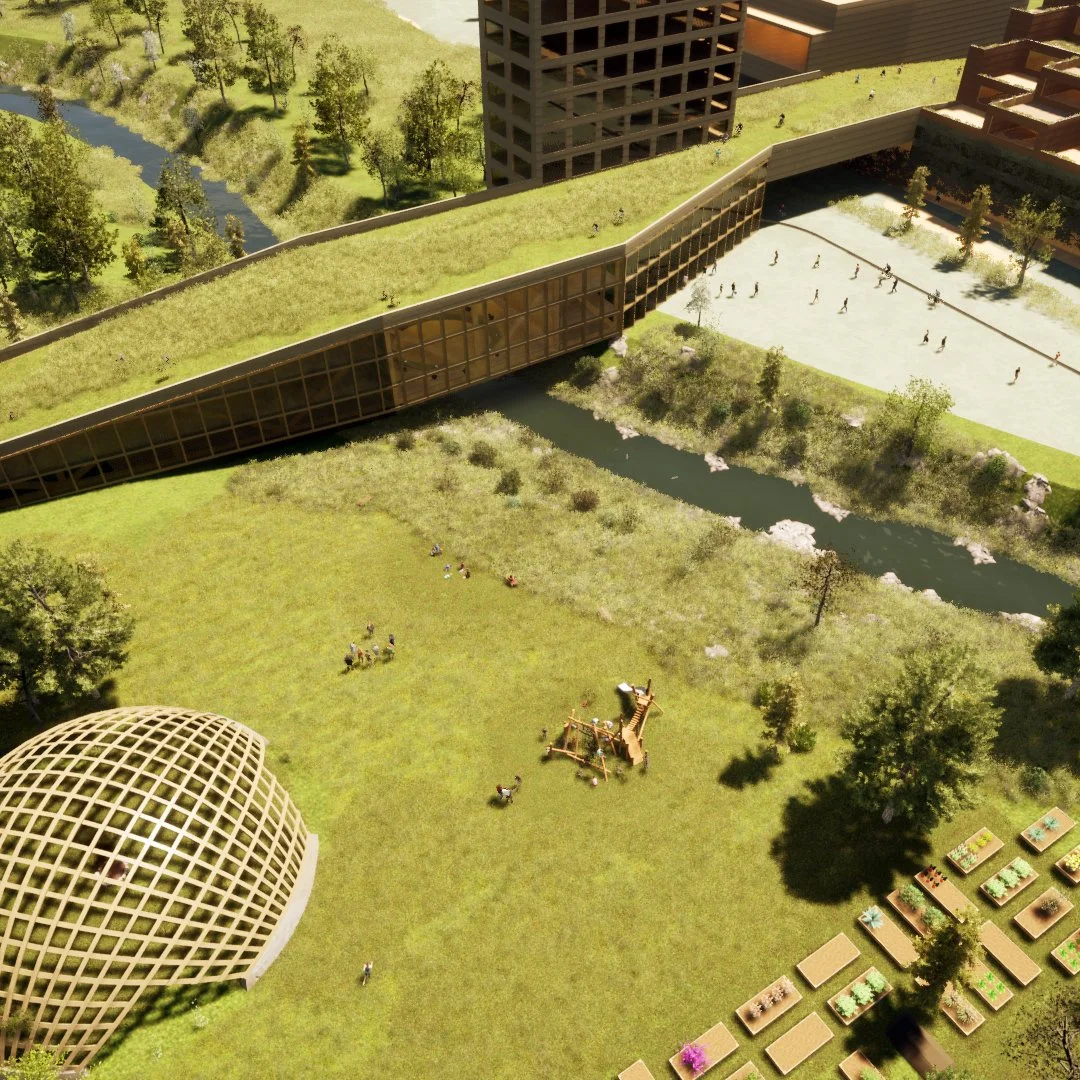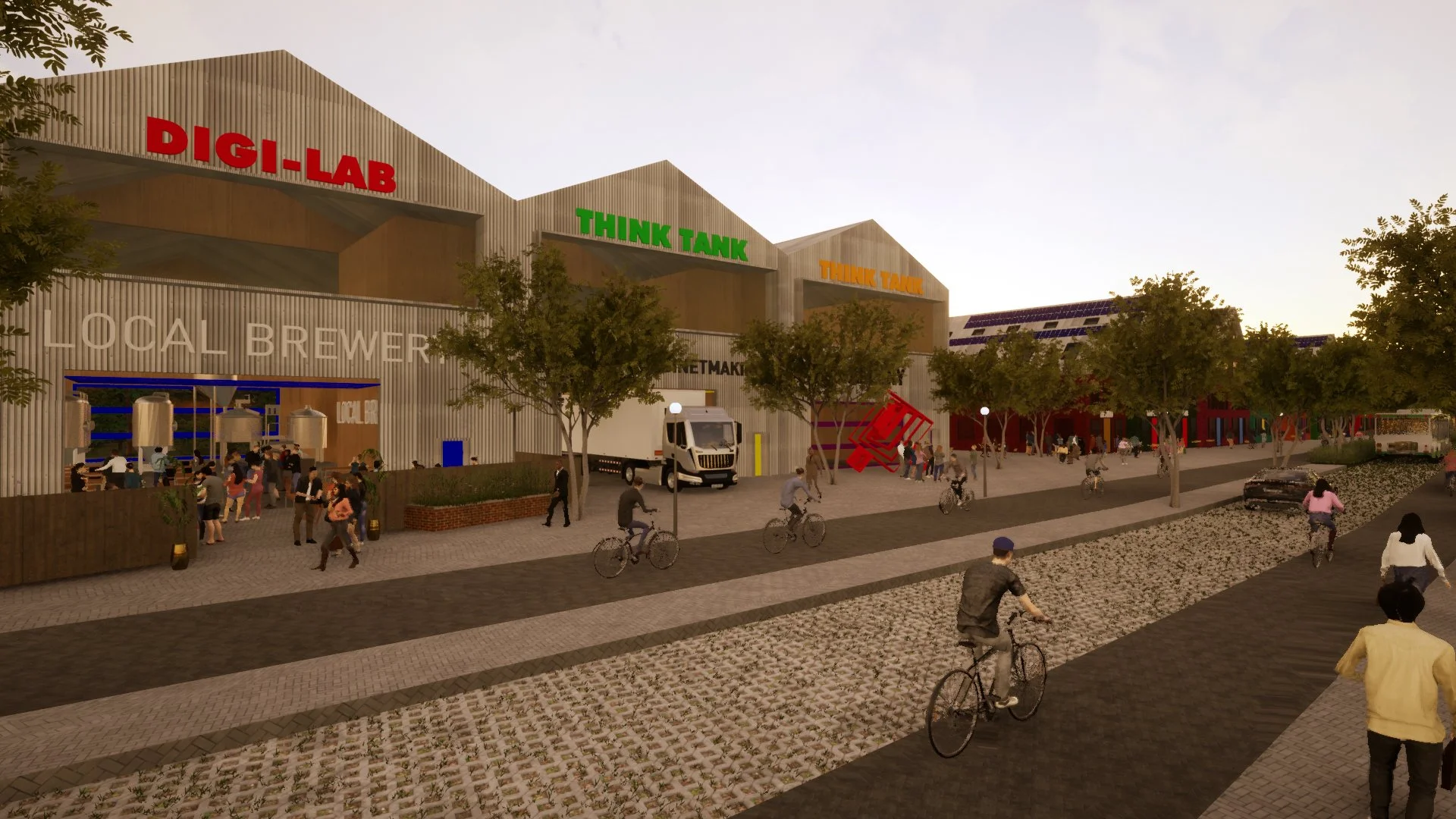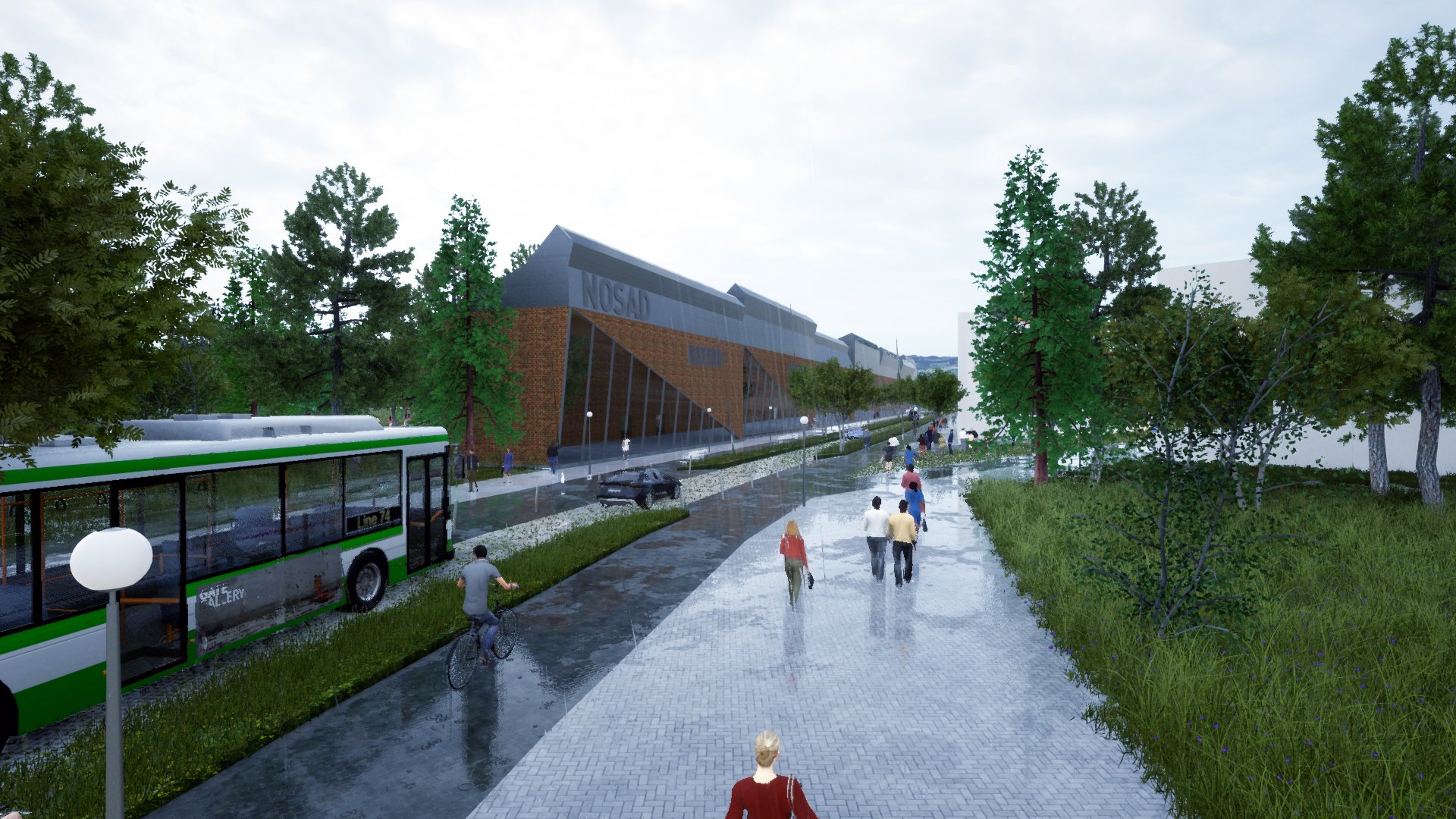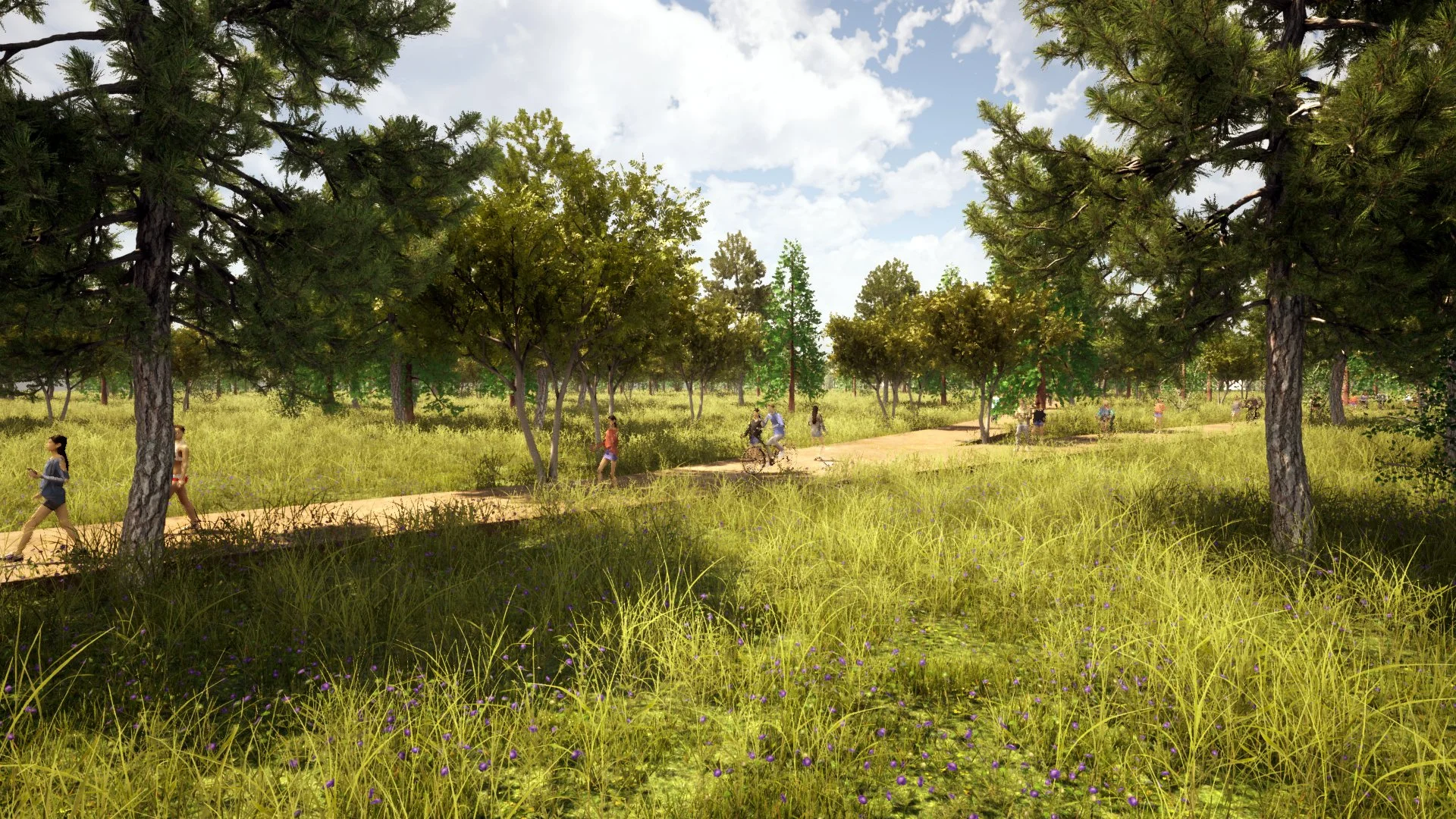mashkikike
Sudbury 2050: Urban Ideas Design Competition
Honourable MentioN
description
Ma-sh-ki-ki-ke:
A story of healing, pour nous et pour la terre
"Ma-sh-ki-ki-ke" (mu-sh-ki-ki-kay), an Anishnaabemowin word that means: to make medicine.
The wellbeing of the community, of all community members, and of the earth are the guiding principles for a place of life, joy, inclusion, support, and reciprocity.
This project is locally-based and grounded in grassroots community priorities, starting with a seed vision from 1000 citizens. Sudbury's urban core is...
Decolonized
Sudbury is located within Anishinaabe Atikameksheng territory. Atikameksheng people and values lead the changes needed in our systems, industries, practices and decision-making structures to heal ourselves and the earth. The urban core reflects and is guided by Anishinaabe identity and values. Signage shares history, facts and teachings.
Anishinaabe language (taught to all school children), art, images and symbols are an integral part of downtown, as are Indigenous events and spaces. The urban core is a place of healing and respect for Mother Earth and for each other.
Part of a healthy ecosystem and watershed
Green spaces, native vegetation, green walls and roofs, and low-impact development enhance biodiversity, improve water quality, and connect people to nature in the urban core. Surfaces are permeable to filter and cool water entering the watershed. Proper waste receptacles and storm drain filters prevent litter from entering Nolin and Junction creeks. The path of Nolin and Junction Creek below downtown is marked with informative art, signage, and trails that raise awareness, promote physical and mental health, and encourage eco-friendly activities.
Net Zero and climate emergency ready
A car-free urban core is connected to surrounding neighbourhoods and to all Greater Sudbury communities with safe and convenient active transportation and transit. Green energy is incorporated into public spaces, and both new and existing buildings are designed to the highest sustainable building standards. An energy positive downtown provides a local, decentralized green energy supply to surrounding institutions and neighbourhoods. A greenway of street trees, gardens, green roofs and walls, and permeable surfaces honours and protects the waters below. Green infrastructure cools the urban core and minimizes flood risks and water use. Downtown functions as a waste-free, circular economy.
Caring
People come first in a more humane urban core. Downtown is safe, friendly and caring for all people and cultures. Community-led initiatives, services, programming and celebrations thrive. Downtown is revitalized but not gentrified. Affordable housing, healthy affordable food, public washrooms, and supporting services are integrated into the urban core.
Vibrant and full of life
The urban core is well cared for, and always full of activity. There are gathering places, resting places and activities for all ages. Play areas for all seasons, informal and formal events, and performance spaces provide recreation and entertainment. Multi-purpose public art invites play and reflects the history, communities, and stories of this territory. The downtown is welcoming to all of Sudbury's diverse populations.
Through a comprehensive community design process, a new Master Plan, which honours the 5 themes described above, creates a thriving downtown core.
The main moves of this project can be summed up as :
REWILDING /
Removing all downtown train traffic allows the vast railyards to rewild themselves through a process of letting the land fallow into perpetuity.
DAYLIGHTING /
Large sections of both Nolin and Junction creek are daylighted. This is not only part of a decolonizing and ecological process, but also creates new spaces for the community to enjoy.
NORTH-SOUTH NEXUS /
Through the daylighting and creation of Nolin and Junction Greens a North-South Nexus is established, which joins the previously dislocated Borgia sector to the Junction triangle.
REVITALIZATION /
Adjacent to the new rewilded railyards, a massive revitalization of the Elgin cultural belt has taken place.
TRANSPORTATION REDESIGN /
A dramatic transportation redesign has created a quieter, less polluted, and more accessible downtown core. Most of downtown is car-free, with exceptions for accessibility purposes, emergency services, and larger deliveries. Main roads going through downtown are narrowed and slowed. Complete streets connect the downtown to the rest of Greater Sudbury. Connections to surrounding neighbourhoods, trails and parks are improved.
NOTE
All new proposed buildings are designed to be built with the latest mass timber construction techniques, with integrated passive design systems, equipped with green roofs and/or rooftop gardens, made with local, sustainable materials and are carbon positive.
Vacant buildings, rooftops, parking areas and laneways have been revitalized and repurposed in numerous ways, including affordable housing; youth, family and adult shelters; green energy generation; community gardens and urban agriculture; community and public art; pop-up uses; community-led spaces; performance spaces; and small businesses.
As the land heals, we heal...
team
Simon Blakeley / Green Economy North, Smart Green Communities Program Manager (Northeastern Ontario), Undergraduate Degree in Geography & Planning, Masters in Urban Environmental Design, Level 2 Certificate in Business Administration.
Jayden Daoust / Architecture student, Artist
Naomi Grant / Co-chair, Coalition for a Liveable Sudbury
Matthew Hunter / M.Arch, Architectural Designer
William Morin / Professor of Indigenous Studies (University of Sudbury), Birds of Pray Create: Cultural Consultant / Anishinaabe Cultural Advisor, Professional Mixed Media Artist.
Elyse Portal / MVS, Ecological Artist
Emilio Portal / MFA, Creative Generalist
Cora-Rae Silk / Artistic Director, Myths and Mirrors Community Arts
Camille Tremblay / Science Communication
Miranda Virtanen / Executive Director, Junction Creek Stewardship Committee









